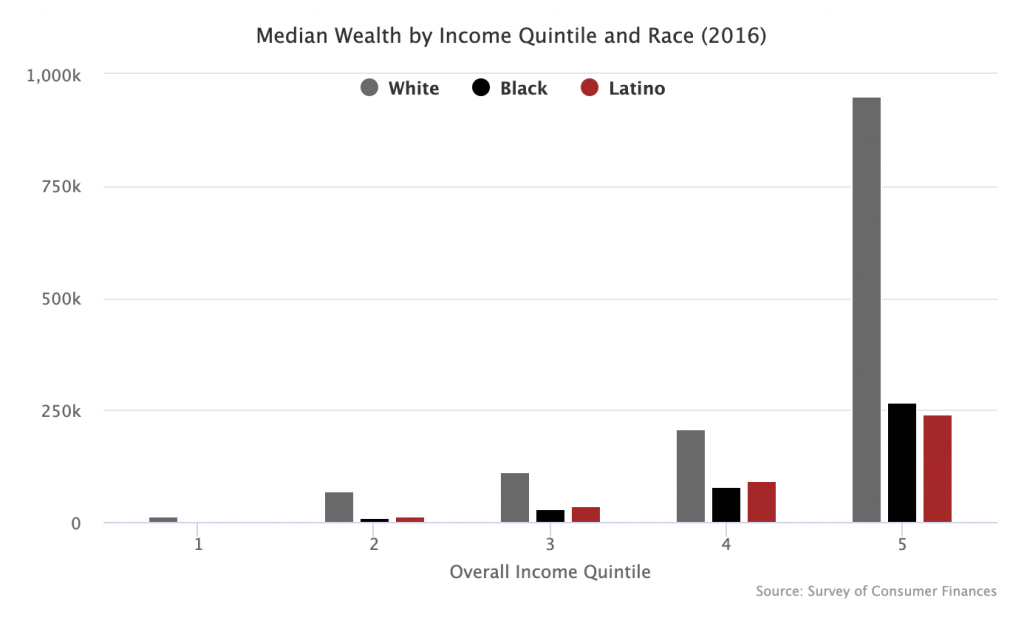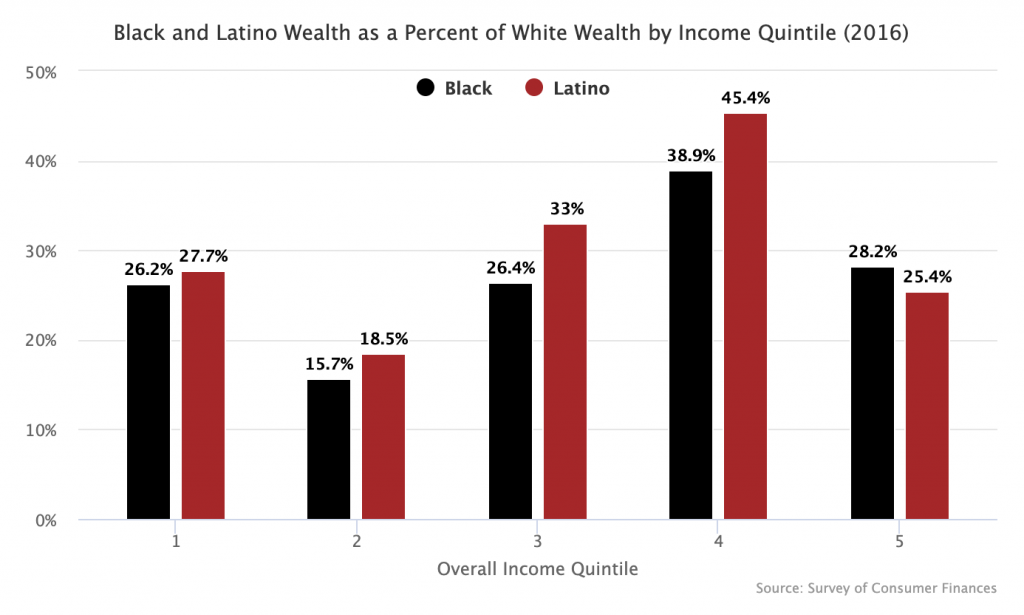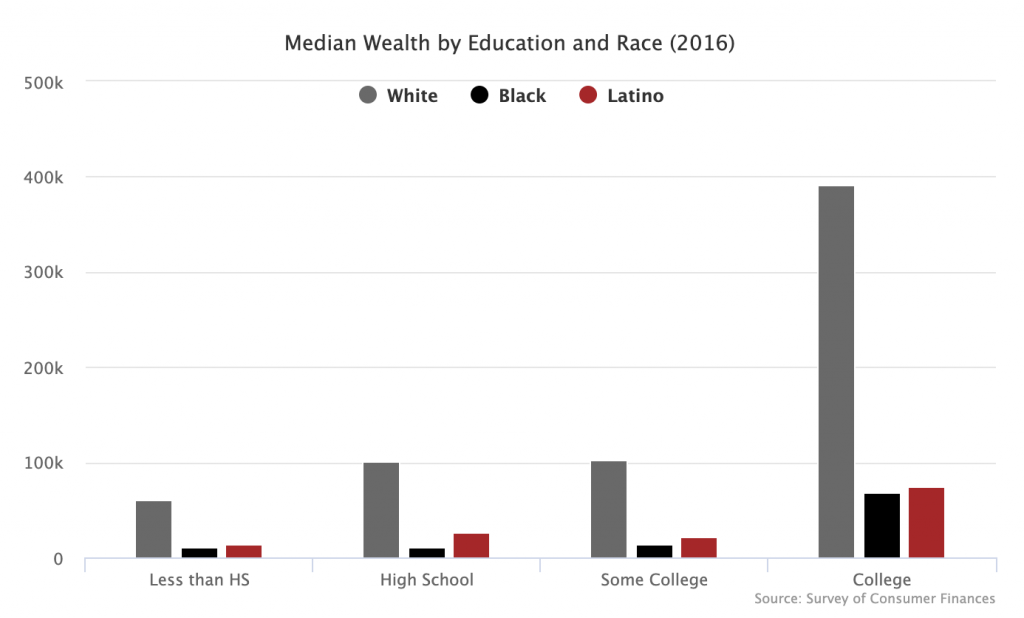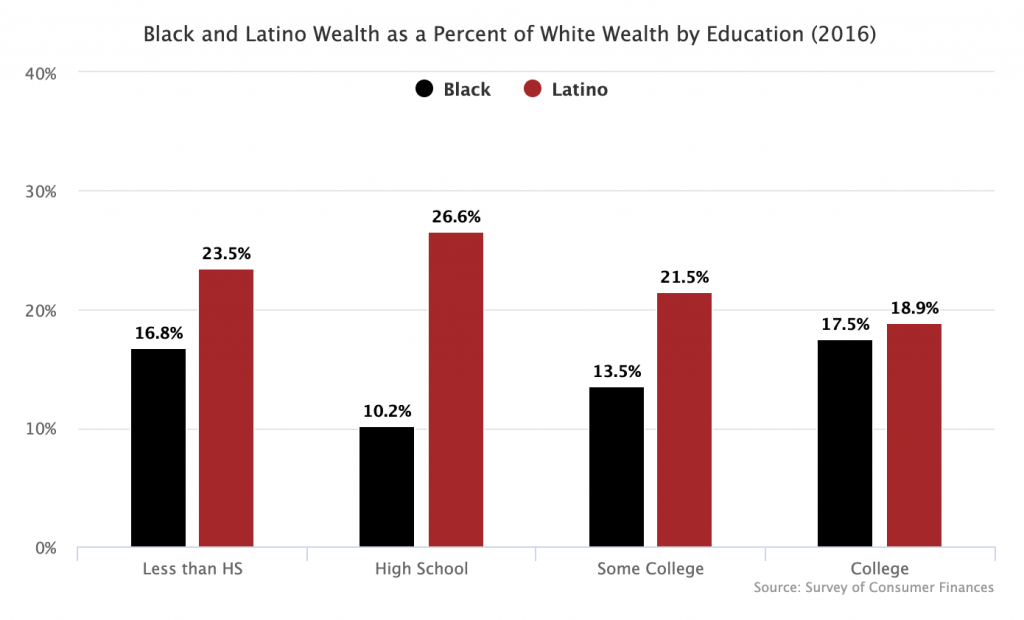Using the 2016 Survey of Consumer Finances, I have pulled out the following figures showing that the racial wealth gap appears in every income group and at every educational level. The upshot is that the elimination of this wealth gap is going to require intentional wealth redistribution. Increasing educational attainment and improving labor market outcomes simply will not be enough.
Income
The graph below charts the median wealth level of each income quintile broken down by race (hover with your cursor to get precise figures).

The way this reads is as follows: white families in the bottom 20 percent of the overall income distribution have a median wealth of $11,920 while black families in that same income group have a median wealth of $3,120. Additionally, Latino families in the fourth income quintile (60th percentile to 80th percentile) have a median wealth of $93,660 while white families in that same income group have a median wealth of $206,500. And so on.
If you divide black and Latino median wealth by white median wealth in each income quintile, you get the following graph.

This reads as follows: black families in the third income quintile (40th percentile to 60th percentile) have a net worth that is 26.4 percent of the net worth of white families in that same quintile. As you can see, black and Latino wealth is just a fraction of white wealth, even when comparing families with similar income levels.
Education
The next graph shows median wealth levels by education broken down by race.

This reads the same as the first graph above, but using educational groups rather than income groups.
Finally, this last graph divides black and Latino median wealth in each education group by white median wealth in the same education group.

As with above, you see that black and Latino wealth is a small fraction of white wealth, even when comparing families with the same education level.
If we are going to make serious strides in reducing these wealth gaps, boosting black and Latino incomes through higher educational attainment and better labor market outcomes clearly will not be adequate. Instead, a larger program aimed specifically at equalizing the distribution of wealth in the country will be necessary.

